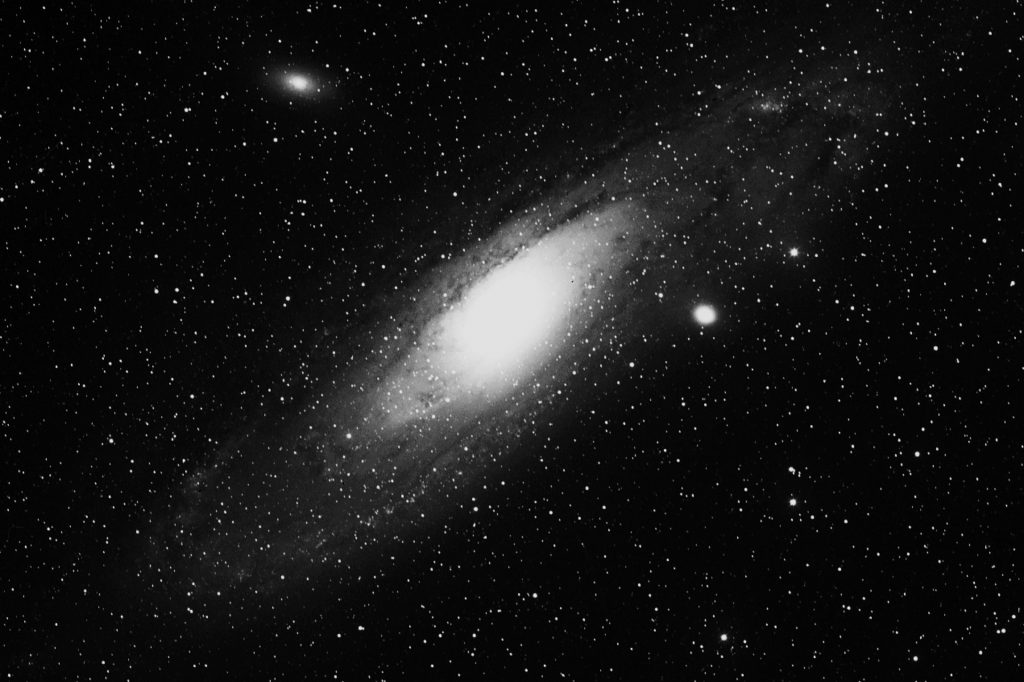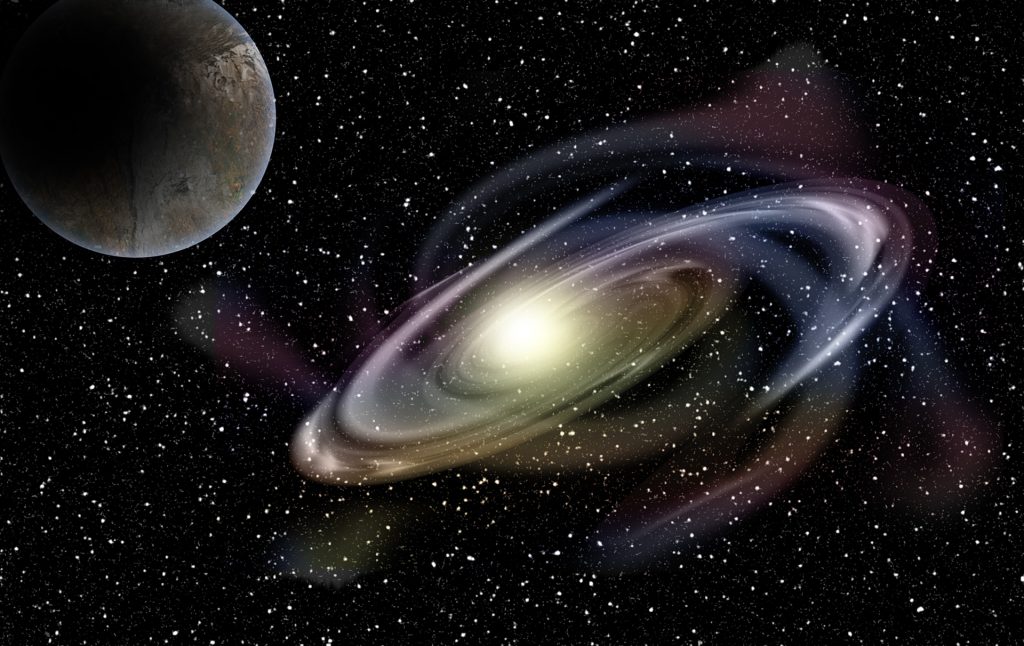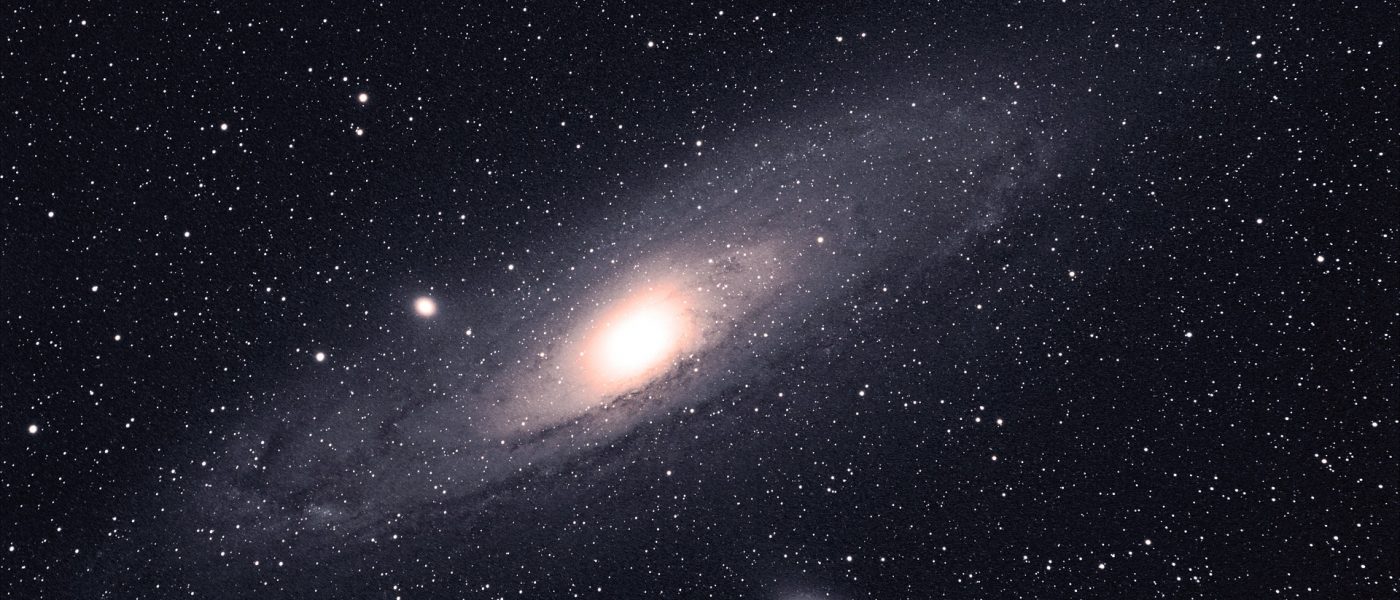The estimated distance of the Andromeda Galaxy from our own was doubled in 1953 when it was discovered that there is another, dimmer type of Cepheid. In the 1990s, measurements of both standard red giants as well as red clump stars from the Hipparcos satellite measurements were used to calibrate the Cepheid distances.

This violent collision formed most of the galaxy’s (metal-rich) galactic halo and extended disk. During this epoch, its rate of star formation would have been very high, to the point of becoming a luminous infrared galaxy for roughly 100 million years. Andromeda and the Triangulum Galaxy had a very close passage 2–4 billion years ago. This event produced high rates of star formation across the Andromeda Galaxy’s disk—even some globular clusters—and disturbed M33’s outer disk.
Andromeda
The Andromeda Galaxy as seen by NASA’s Wide-field Infrared Survey Explorer.
The Andromeda Galaxy was formed roughly 10 billion years ago from the collision and subsequent merger of smaller protogalaxies.

Over the past 2 billion years, star formation throughout Andromeda’s disk is thought to have decreased to the point of near-inactivity. There have been interactions with satellite galaxies like M32, M110, or others that have already been absorbed by Andromeda Galaxy. These interactions have formed structures like Andromeda’s Giant Stellar Stream. A galactic merger roughly 100 million years ago is believed to be responsible for a counter-rotating disk of gas found in the center of Andromeda as well as the presence there of a relatively young (100 million years old) stellar population.
Until 2018, mass estimates for the Andromeda Galaxy’s halo (including dark matter) gave a value of approximately 1.5×1012 M☉[15] (or 1.5 trillion solar masses) compared to 8×1011 M☉ for the Milky Way. This contradicted earlier measurements, that seemed to indicate that Andromeda Galaxy and the Milky Way are almost equal in mass. In 2018, the equality of mass was re-established by radio results as approximately 8×1011 M☉[42] [43] [44] [45] In 2006, Andromeda Galaxy’s spheroid was determined to have a higher stellar density than that of the Milky Way[46] and its galactic stellar disk was estimated at about twice the diameter of that of the Milky Way.[10] The total stellar mass of Andromeda Galaxy is estimated to be between 8×1011 M☉[42] and 1.1×1012 M☉.,[47][48] (i.e., around twice as massive as that of the Milky Way) and 1.5×1012 M☉, with around 30% of that mass in the central bulge, 56% in the disk, and the remaining 14% in the halo.[49] The radio results (similar mass to Milky Way galaxy) should be taken as likeliest as of 2018, although clearly this matter is still under active investigation by a number of research groups worldwide.
As of 2019 current calculations based on escape velocity and dynamical mass measurements puts the Andromeda Galaxy at 0.8×1012 M☉,[50] which is only half of the Milky Way’s new mass calculations done in 2019, at 1.5×1012 M☉.[51]
Wikipedia contributors. (2020, January 11). Andromeda Galaxy. In Wikipedia, The Free Encyclopedia. Retrieved 06:28, January 12, 2020, from https://en.wikipedia.org/w/index.php?title=Andromeda_Galaxy&oldid=935179073


